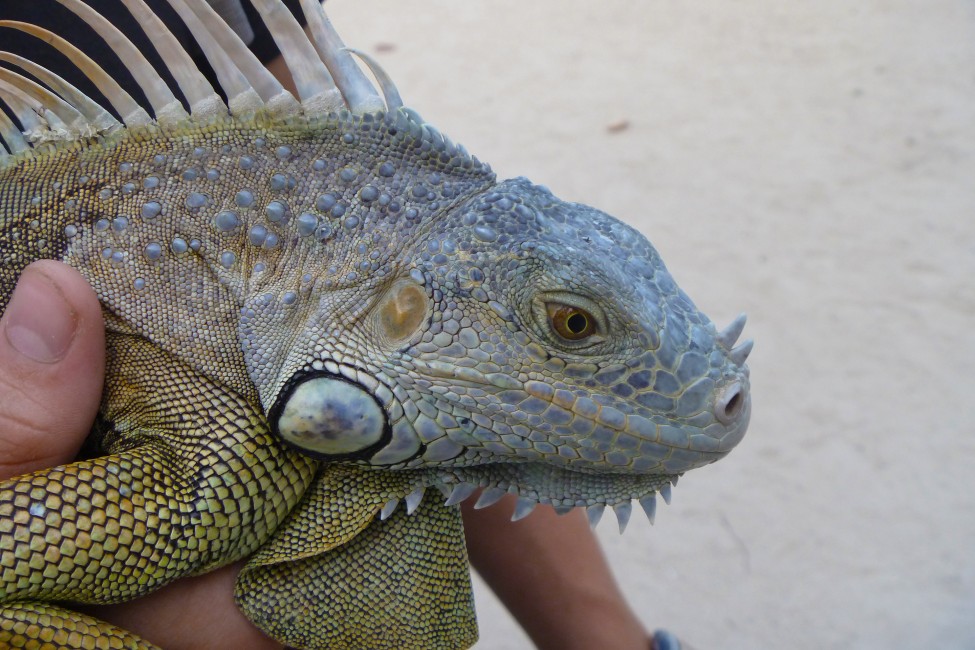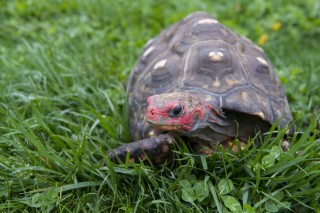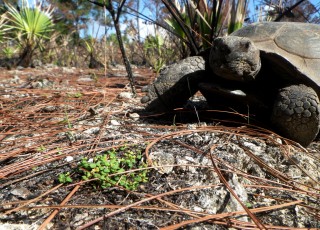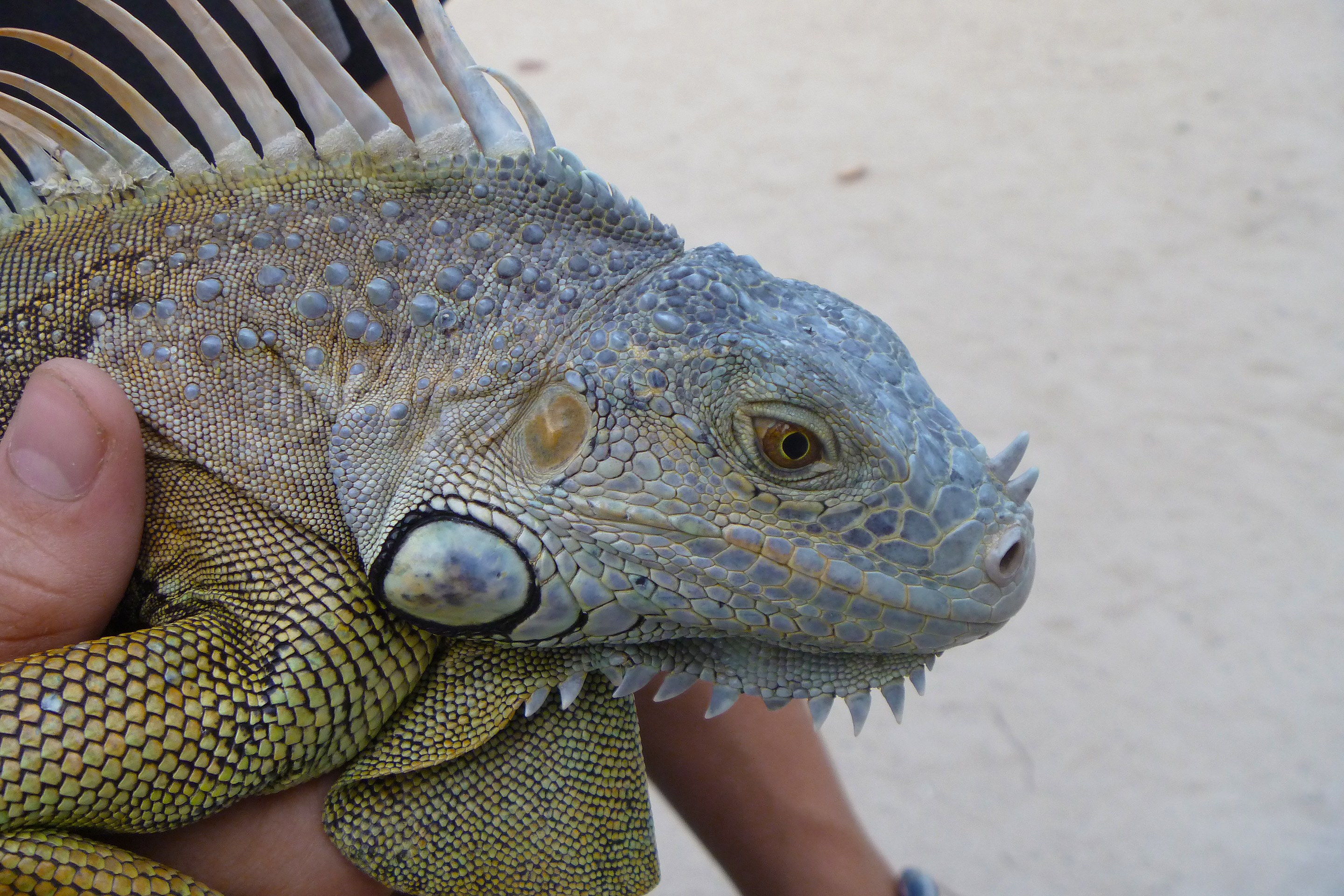
July 16, 2020
Sleeping Iguanas
- as seen by -
 Eric Januszkiewicz
Eric Januszkiewicz
The Cayos Cochinos islands of Honduras are a wildlife researcher’s paradise. The only permanent facilities are strictly for research purposes, and the wildlife is abundant.
I was there for two weeks – and wish it had been longer. I spent my days walking through the thick forest with a crew of researchers mainly looking for a subspecies of the boa constrictor (Boa constrictor imperator) which has been greatly impacted by poaching for the pet trade. We were also surveying for other herps (a nickname for reptiles and amphibians), both day and night.
Some species were easier to catch after dark when they were sleeping. The green iguana (Iguana iguana) was one of them. We found these brilliantly colored lizards up in the trees dozing on the branches. Our goal was to catch them to collect morphological data like length and mass.
Iguanas move quickly. We had to be very stealthy. If the iguana we were aiming for woke up, it would try to dart away. But once we got our hands on it, the iguana seemed to realize that we meant no harm and fell back to sleep.
One night, we brought an iguana to the research station for the others to observe, and I had the pleasure of carrying it back to its home. It was calm as could be and slept most of the way as I hiked down the mountainside.
The native green iguana populations are being monitored to see if they are displacing the less common black-chested spiny-tailed iguana (Ctenosaura melanosterna) which is endemic to Honduras. Our observations will help to inform conservation efforts to protect the vast number of species present in this Central American country.




Leave a Comment